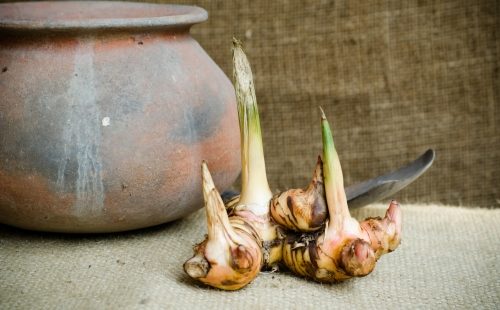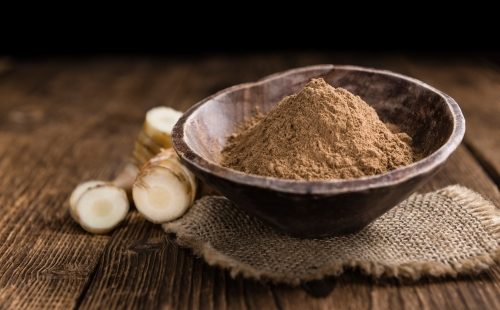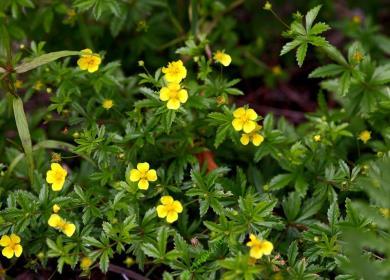The content of the article
The culture is used in distillery, added to fish as a spice and tint. Appreciated in the leather craft - it is processed and painted in black and red. Grass was used in the Middle Ages as an effective remedy against intestinal ailments and protracted diarrhea of an infectious origin. The plant is interesting not only for traditional healers. The healing effects of the sea otter are tested by scientific medicine at the level of clinical trials. Its antiulcer, antibacterial, anti-inflammatory properties are proven.
Botanical characteristic
The cinquefoil erect is widespread in the east of Europe, in the Asian countries. On the territory of the Russian Federation it is found mainly in the European part. It grows on sandy, chernozem and boggy soils. Often grows in meadows, undergrowths, forest edges. The main condition for optimal plant vegetation is a large amount of light and a temperate climate. In this case, the grass forms dense thickets, a characteristic feature of which is the presence of golden yellow flowers. In the wild, culture can be recognized by morphological characteristics.
- General form. Pink herbaceous perennial up to 50 cm high.
- Underground part. Well developed. It is represented by an unevenly growing thickened rhizome of a cylindrical shape. The length reaches 7-10 cm. Numerous cord-shaped roots extend from the rhizome. The surface is woody reddish-brown. The kink is white, but when in contact with air it quickly acquires a blood-red color.
- The stalks. Thin leafy stems of cylindrical shape can grow from the rhizome singly or in groups. Branched in two directions, forming a fork.
- Leaves. Long leaves leave right from the rhizome. They consist of three to five sheet plates of a wedge-elongated shape. The edge of the leaves is deep serrate. Stem leaves are mainly triple, arranged alternately, sessile. Near each leaf there are stipules. The surface on both sides is slightly rough due to pressed hairy pubescence.
- Flowers. Kalgan blooms all summer - from May to September. Flowers are located on long peduncles, singly. Corolla is golden yellow, consists of four petals.
- Fruit. Mnogoretseki, ripen as the potentilla blooms, starting in August.
Harvesting raw materials
Officially, the best time for harvesting Kalang rhizomes is considered to be early spring and late autumn. This is the time when the aboveground part does not develop. However, in herbalists recommendations for collecting rhizomes during flowering of grass are indicated. From this we can conclude that the collection period is long, harvesting can be carried out at any convenient time. Plant stocks are as follows.
- Collection. Dig up the rhizomes with a shovel. Carefully shake off the ground, chop off the aboveground part.
- Training. Rinse under running water with a brush, wither in the shade for several days to remove excess moisture. Cut into large pieces (if necessary).
- Drying. For proper drying, the rhizomes are laid out in a thin layer on pallets, which are placed in the shade during through ventilation or in a warm attic. When using dryers observe temperature conditions up to 50ºС.
Composition
The main role in the chemical composition of galangal root belongs to tannins. They account for about 31% of the mass of the rhizome. Thanks to tannins, the grass has a number of positive effects for the body:
- anti-inflammatory;
- astringent;
- hemostatic;
- bactericidal;
- fungicidal;
- antiprotozoal;
- healing.
The cinquefoil is erect - extremely rich in organic acids, phenolcarboxylic compounds, saponins. At their expense, the plant has a secretory effect on the stomach, pancreas, liver and gall bladder. In addition, it has a pronounced antispasmodic effect, eliminates abdominal pain. Due to the content of saponins, raw materials reflexively stimulate sputum excretion.
Some sources indicate that kalgan acts as a plant eubiotic. But this is not entirely correct. The cinquefoil cannot colonize the intestines with beneficial microflora, however, it significantly suppresses pathogenic and conditionally pathogenic microorganisms, allowing beneficial bacteria to restore physiological balance.

Healing properties
An upright cinquefoil is used in traditional and traditional medicine. Due to the draining effect of tannins on the mucous membranes, the long-term use of the herb must be agreed with the doctor. Phytotherapy is appropriate for a number of pathological conditions.
- Endocrine Disorders It can be used for mild stimulation of the thyroid gland, lowering blood cholesterol, stimulating metabolism. The plant does not contain thyrotropic components, however, it normalizes metabolism due to the content of a large number of minerals.
- Female diseases. The root has become famous as a "male" plant, but it is also useful for women. The plant stops uterine bleeding, provoked by hormonal disruptions, eliminate menstrual irregularities. Extracts from rhizomes are used for douching with infectious and inflammatory lesions of the mucous membranes of the genital organs.
- Gastrointestinal diseases. Herbal remedy is equally useful for gastritis, peptic ulcer, disorders in the liver, gall bladder, as well as inflammatory bowel lesions - colitis, infectious diarrhea. Due to its powerful antimicrobial properties, the plant treats diarrhea with dysentery, spasms and colic with ulcerative colitis. In addition, lotions with Kalgan effectively relieve inflammation in hemorrhoids, and ingestion of herbs inside allows you to stop hemorrhoidal bleeding.
- Male pathology. For men, the culture is useful with mild sedative properties, the ability to prevent prostatitis and normalize the central nervous system. It struggles with erectile dysfunction at once on several levels - eliminates neurotic factors, normalizes blood circulation, optimizes the functioning of hormone-producing glands.
- ENT practice. Potato rhizomes are brewed for rinsing the throat and mouth.The drugs well remove the inflammatory process, eliminate unpleasant odors, heal damaged mucous membranes.
- Joint ailments. Alcoholic extracts from the plant are used for grinding. Regular use can alleviate pain in gout and osteochondrosis, and with arthritis and arthrosis slows down degenerative processes in the joints. In addition, the plant has a systemic anti-inflammatory effect, allows you to relieve seasonal exacerbations of joint diseases.
- Lung problems. Expectorant properties of herbal remedies are relevant when there is a need to alleviate cough with bronchitis, pneumonia, colds. Hemostatic properties are appropriate for tuberculosis - the plant gently removes sputum, reduces the risk of pulmonary bleeding.
- Skin pathology. Kalgan preparations - a tool for treating wounds, burns, frostbite, abscesses, trophic ulcers, eczema, dermatitis, fungal and parasitic lesions of the epidermis.
The root may be useful in the treatment of infectious and inflammatory lesions of the liver, accompanied by edema or ascites. The plant is used for hepatitis and even for cirrhosis.
Prescription Drugs
All preparations from the plant can be used internally and externally. In the second case, the hood is diluted with water. An ointment is also prepared from dried rhizomes. If it is not possible to harvest grass yourself, the raw materials are purchased at a pharmacy or from herbalists. Unlike a rare congener, white cinquefoil, galangal practically does not fake.
Rhizome Broth
Features Decoction treat skin problems - wounds, abscesses, burns, bedsores, eczema and dermatitis. In this case, the herbal preparation is used for lotions. They also gargle and do douching. Inside, they are taken as a hemostatic agent, for the treatment of cough, diarrhea, and other gastrointestinal problems.
Preparation and use
- A teaspoon of crushed roots is placed in a metal container.
- Pour the raw materials with a glass of boiling water, immediately put on fire and bring to a boil.
- They boil for a minute, after which they leave to insist for about an hour.
- After straining, take up to two glasses per day.
Milk extract
Features The product is effective for coughing, quickly converts it into a productive one and relieves airway inflammation. It can be used to treat secretory disorders of the stomach, with cramping in the intestine. Milk somewhat softens the astringent and enveloping effects of culture.
Preparation and use
- An incomplete tablespoon (or dessert) spoon of raw materials is poured into a glass of cold milk.
- The mixture is put on fire, slowly brought to a boil, after which it is insisted for half an hour.
- Take the medicine warm in a tablespoon three times a day.
Alcohol extraction
Features Alcohol-containing extracts are taken for all ailments that relate to the list of indications for the use of the plant. Also used to prevent thyroid disease, stimulate the immune system. For external use, tincture is diluted with water.
Preparation and use
- Pour 20 g of crushed root to 100 ml of diluted alcohol or vodka.
- Put in a dark place at room temperature for 14 days.
- With diarrhea, they drink 40 drops up to three times a day. For other therapeutic purposes, vodka tincture is used 25 drops three times a day.

Ointment
Features Used for the treatment of pressure sores and wounds, abscesses and rashes, as well as with eczema, weathered skin.
Preparation and use
- On a low fire, melt the base - pork, goose fat or butter.
- When the base becomes liquid, add a tablespoon of powder from the rhizome, mix thoroughly.
- Two tablespoons of wax are introduced into the mixture, mixed.
- After boiling, continue to heat for five minutes.
- After half an hour of infusion, the ointment is filtered.
- Impose on the affected area under the tissue at night.
Powdered rhizomes of the cinquefoil can sprinkle minor damage to the skin - for disinfection and accelerated healing. The powder is applied to wounds and non-healing ulcers. Use with weeping eczema. You can also brush your teeth - this eliminates bad breath and strengthens the gums. It is taken orally up to five times a day as a remedy for diarrhea. A single dose is half a teaspoon. To facilitate swallowing, the phytopreparation is mixed with water.

